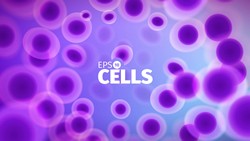Optimised biological scaffolds for tissue regeneration
Organ transplant is the gold standard for treating end-stage organ failure but the severe shortage of donors necessitates alternative methods based on tissue engineering and regenerative medicine. However, allogeneic bone grafts can fail to vascularise and remodel, while the use of scaffolds, cells and growth factors can be associated with negative host response and rejection. The EU-funded DECELL BONE REGEN (Development of an innovative supercritical fluid decellularisation technology to produce advanced biocompatible scaffolds for complex musculoskeletal regeneration) project proposed to generate biological scaffolds following the removal of cells (decellularisation). In this context, researchers tested different decellularisation agents such as detergents, acids and bases on porcine liver, bladder and small intestine and successfully characterised the efficacy of the approach. In addition, they examined the effect of the decellularisation methodology on the surface molecular functionality of the scaffolds. In another part of the project, scientists investigated the recellularisation of scaffolds with different human cells. They examined the apoptosis, proliferation, morphology and stratification of cell layers using immunohistochemistry. Important insight was also generated on the interaction between macrophages and the host remodelling process, focusing on macrophage responses to extracellular matrix hydrogels. Supercritical fluids do not have distinct gas and liquid phases. Scientists optimised supercritical fluid technology for decellularisation purposes. Modification of existing equipment enabled directional flow of supercritical carbon dioxide for nuclear and cellular removal of liver tissue. Various optimisation steps were performed to define operating conditions for decellularisation with intermediate success. The use of ethanol and deionised water in combination with supercritical processing led to a 15 % reduction in DNA content. Overall, the decellularisation and recellularisation methodology has great potential for the development of functional biological scaffolds with vascular networks from whole organs. In turn, this will translate into improved clinical outcome with minimal side effects.







